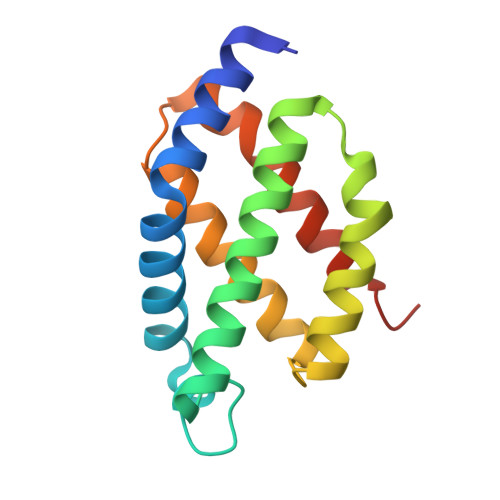Structural and photophysical characterization of the small ultra-red fluorescent protein.
Maiti, A., Buffalo, C.Z., Saurabh, S., Montecinos-Franjola, F., Hachey, J.S., Conlon, W.J., Tran, G.N., Hassan, B., Walters, K.J., Drobizhev, M., Moerner, W.E., Ghosh, P., Matsuo, H., Tsien, R.Y., Lin, J.Y., Rodriguez, E.A.(2023) Nat Commun 14: 4155-4155
- PubMed: 37438348
- DOI: https://doi.org/10.1038/s41467-023-39776-9
- Primary Citation of Related Structures:
7UQA - PubMed Abstract:
The small Ultra-Red Fluorescent Protein (smURFP) represents a new class of fluorescent protein with exceptional photostability and brightness derived from allophycocyanin in a previous directed evolution. Here, we report the smURFP crystal structure to better understand properties and enable further engineering of improved variants. We compare this structure to the structures of allophycocyanin and smURFP mutants to identify the structural origins of the molecular brightness. We then use a structure-guided approach to develop monomeric smURFP variants that fluoresce with phycocyanobilin but not biliverdin. Furthermore, we measure smURFP photophysical properties necessary for advanced imaging modalities, such as those relevant for two-photon, fluorescence lifetime, and single-molecule imaging. We observe that smURFP has the largest two-photon cross-section measured for a fluorescent protein, and that it produces more photons than organic dyes. Altogether, this study expands our understanding of the smURFP, which will inform future engineering toward optimal FPs compatible with whole organism studies.
- Cancer Innovation Laboratory, Frederick National Laboratory for Cancer Research, Frederick, MD, 21702, USA.
Organizational Affiliation:


















